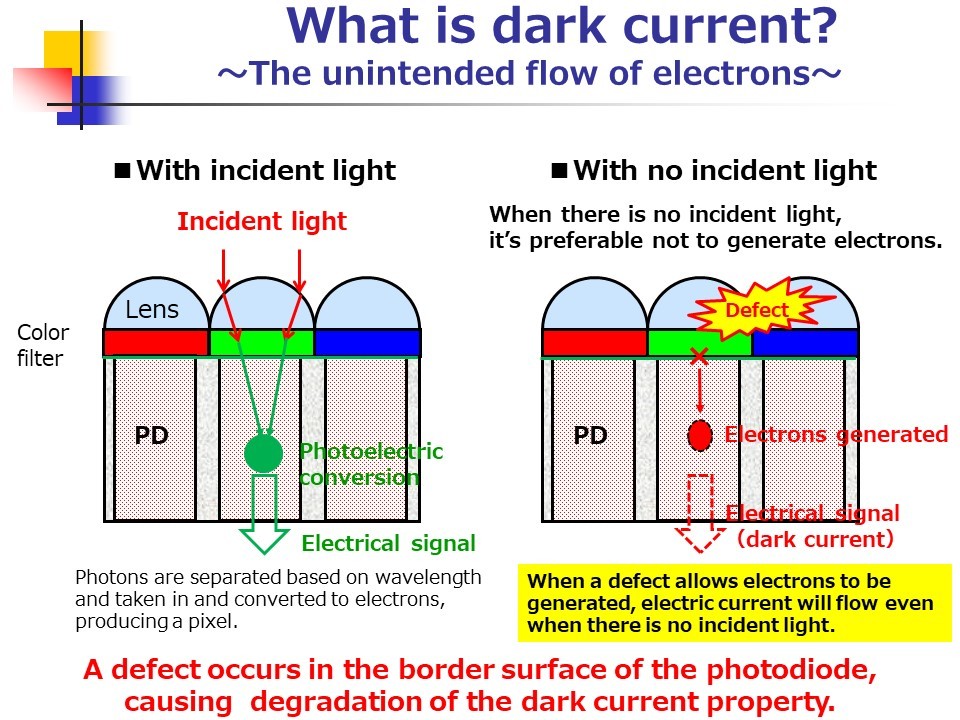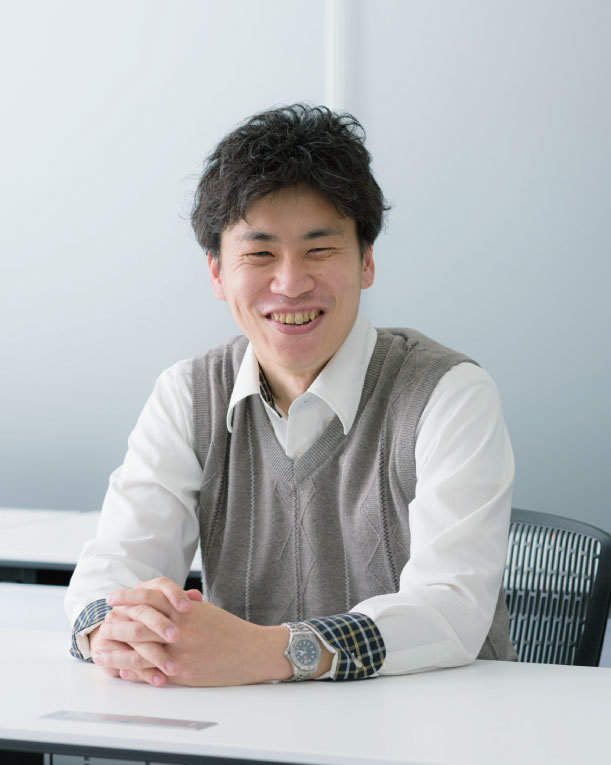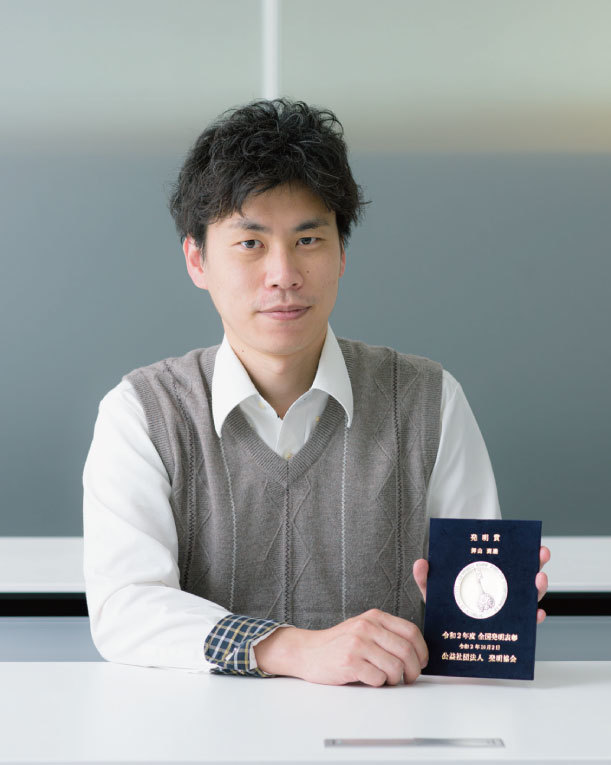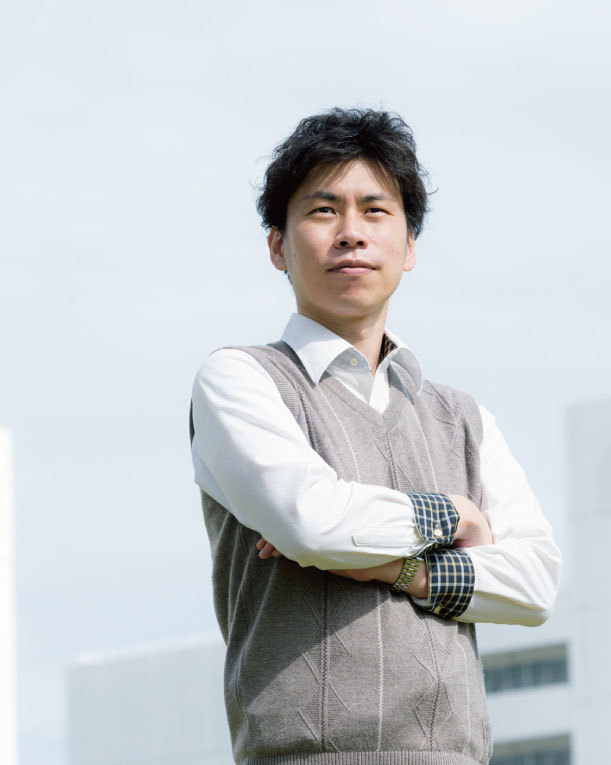STORY
Employee Development
Achieving Higher Quality CMOS Image Sensors!The DNA of a Developer Continuously Challenging Himself Toward Unprecedented Technologies
August 24,2022
Back-illuminated CMOS image sensors are used in a wide variety of applications today. One of the reasons they’ve become so widespread is because of the technology that suppresses dark current,*1 which causes degradation of image quality. This technology has succeeded in dramatically improving the imaging properties of image sensors, and its impact is enough to turn the industry on its head. They patented this technology in 2011, and in 2020 it received the Invention Award in the FY2020 National Commendation for Invention hosted by the Japan Institute of Invention and Innovation. The award recipient Itaru Oshiyama was only a second-year employee of Sony Semiconductor Solutions Corporation (SSS) when he came up with the patented technology, and he was able to get it into mass production only two years later.
Oshiyama’s patented technology was “inspired by a counterintuitive idea.” When we asked him exactly how he came up with such a game-changing technology, he showed us a mindset and attitude toward work that anyone can learn from.
*1) A weak electric current that flows in photosensitive devices even when there is no irradiation, due to the photoelectric effect. It is caused by thermal factors and poor insulation.
Oshiyama Itaru
Sony Semiconductor Solutions Corporation
Research Division 2
Profile: Itaru Oshiyama joined Sony Corporation in 2006. He worked on cutting-edge MOS processing development and then back-illuminated CMOS image sensor processing development. He has also been in charge of technology development operations for fixed-charge films, pixel-to-pixel deep trench isolation, and moth-eye structures for photoelectric conversion. He took his current position of Senior Manager of integration and film formation technology in 2017.
Fueled by a setback in one of his first experiences at the company
The patented technology “inspired by a counterintuitive idea”
Oshiyama won the Invention Award for a technology that suppresses the dark current that is generated in the photodiode when converting photons that are taken in by the image sensor into electrons. Dark current can impede image sensors, causing degradation of imaging properties. If it is present during imaging in dark places, the image sensors will be unable to display the dark spots in black; they’ll look whiteish instead.
If that was the case, you might think that the photodiode should be built so as not to allow that dark current to occur, but that is unavoidable in the production process. So what Oshiyama came up with was a technology to cover the photodiode with a fixed-charge film to suppress the occurrence of dark current. This technology was inspired by a counterintuitive idea, and it was affected significantly by a setback that Oshiyama experienced shortly after joining the company.

When Oshiyama joined the company in 2006, he was first assigned to the cutting-edge transistor development team. At the time, there was intense competition in the development of transistor technology, and the team Oshiyama was assigned to was working hard at their research every day under the motto of “Strive for the world’s best properties.” But just a year later, in 2007, the company’s plans for transistor development were canceled and the team was disbanded. “I’d come so far and I wanted to keep going,” says Oshiyama, describing his strong motivation and his feelings of frustration. His next assignment was the CMOS image sensor development team. While the team had different goals, they handled the same devices and raw materials as with transistors, so it was an environment where Oshiyama could utilize his previous expertise.
“In transistors, fixed charge is an annoying issue that causes deterioration,” Oshiyama says. But an idea occurred to him. “When I worked with transistors, the issue was how to get rid of fixed charge, but with CMOS image sensors, in contrast, I wondered if we could use fixed charge to suppress dark current.” It was all the time he’d spent thinking about fixed charge that led to the counterintuitive idea of utilizing fixed charge effectively.
When you don’t know the answer, research it right away
Signs of the engineering spirit as early as elementary school
When we asked where this counterintuitive idea came from, Oshiyama answered, “It just came to me at some point.” That makes it sound so simple, but he says, “The important thing is to keep on thinking and thinking.” It’s because Oshiyama is always thinking that he can pick up on oversights. This ability to think things through is an essential skill for engineering, but is it the kind of skill that people pick up naturally?
Oshiyama didn’t originally intend to work in a research role, but he has always been the type of person who immediately wants to research whenever he doesn’t know the answer. He recounts one memorable anecdote from when he was in the third grade of elementary school. He had the feeling that the color of his clothes might affect how warm he felt, so for his summer-vacation independent research project, he researched the effects of clothing color on differences in temperature rise. He chose a sunny spot and lined up different fabrics in various colors to check differences in temperature rise, and he also used a magnifying glass to concentrate the light and find out which color started to smoke the fastest. That desire for knowledge and the impulse to act right away to research might also have nurtured in him the powers of observation necessary to notice phenomena. This anecdote seems to show why we shouldn’t leave a question unanswered.

Right now, he says, the most important priority in his work is to move quickly. “In my university research lab, everything was up to the individual, but it’s different at a corporation. Lots of people are involved and one single thing can have a big impact on everything else,” he says. That’s why Oshiyama tries to tackle the things he is capable of as soon as he can.
He also focuses on “communicating in an understandable way.” He says, “Technologists can sometimes be a little smug. But if you don’t communicate in a way that others understand, you won’t be able to convey what you want to achieve. The bigger the corporation, the more likely it is that you might not be able to explain it for yourself every time a decision is being made. That’s why it’s especially important that you can explain how a technology is used in a way that laypeople can understand.”
Given the anecdotes from his childhood about researching right away when he didn’t know the answer and communicating what he’d learned (presenting his independent research project), it feels like moving quickly and communicating simply are things that Oshiyama puts into practice naturally, maybe even unconsciously.
SSS has a culture of creating new things
Oshiyama says that going forward, he wants to continue to be involved in the development of new technologies. A challenger’s spirit is essential for engineers, and the reason Oshiyama was able to develop his was because he was at SSS. He says, “SSS is a company that gives you a lot of discretion. It may not be ideal for people who prefer to wait for instructions, but if you’re self-motivated to work quickly and steadily, it’s an incredibly fun place to work.” As we covered, looking back at Oshiyama’s career, in his first year at the company he joined a team that aimed to be number one in the world. From his second year, he was involved with a team that accomplished development and mass production for a game-changing technology. After that, he has established one revolutionary technology after the next. In his first year, Oshiyama learned the engineering spirit of, not developing according to pre-determined conditions, but developing unprecedented things and the world’s number-one technologies, and then, thanks to SSS’s corporate culture of freewheeling ideas and the discretion to actually experiment, he succeeded in developing a patented technology in his second year.
Now that he’s in the position of managing a team, Oshiyama says, “I’ve enjoyed myself so much at the company so far, and that’s why next I want to give younger generations this kind of experience too.” His message for the next generation is, “SSS has a culture of creating new things. You’ll be given a lot of discretion. That’s why it’s necessary to establish for yourself what technologies and expertise make up your core.” Oshiyama was able to take what he learned in transistor development and apply it to CMOS image sensors, which is what led to the new technology development down the line. It seems like having absolute confidence in your technologies and expertise can lead to intuition and flexible ideas as an engineer.
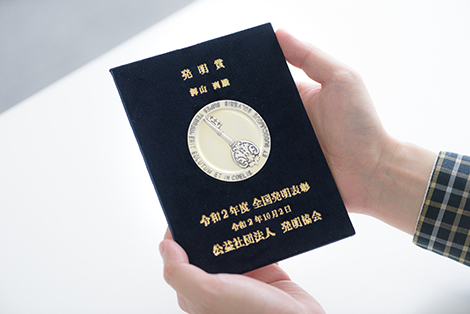
The Invention Award badge from the FY2020 National Commendation for Invention
With the corporate culture of an engineer mindset of challenging yourself to be number one in the world, Oshiyama also had superiors who gave him the core technologies and expertise necessary to accomplish this. It feels like the strength of SSS’s development team is this culture of creating new things that they have continuously passed down.
